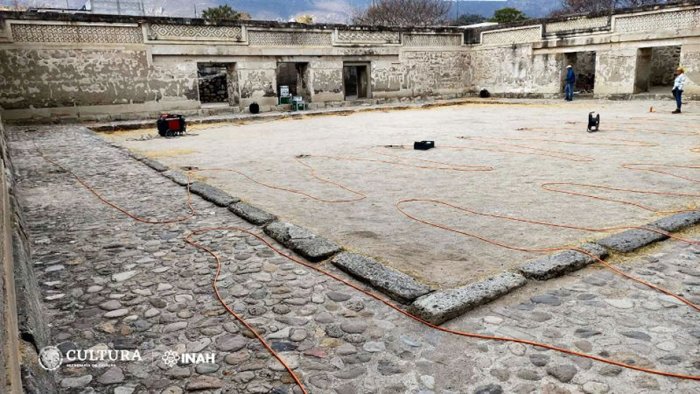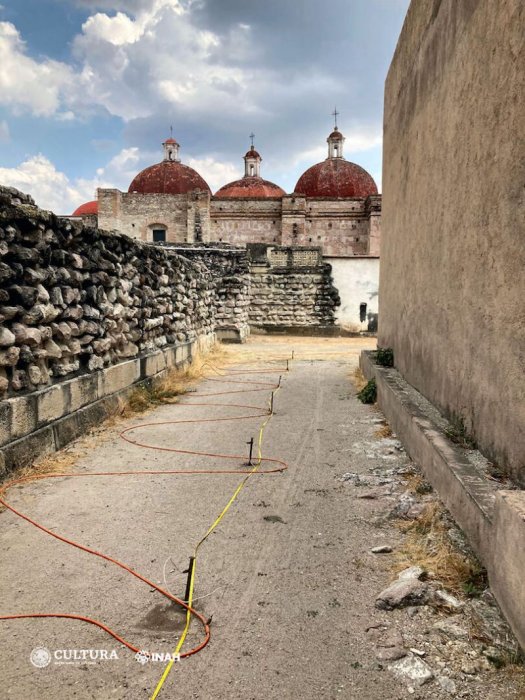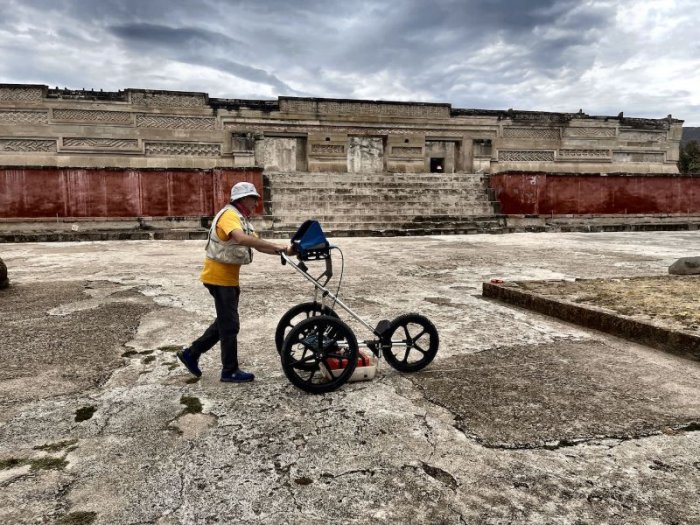Jan Bartek – AncientPages.com – The Zapotec civilization was by no means primitive. On the contrary, when investigating archaeological sites in the Valley of Oaxaca in Mesoamerica, scientists found evidence the history of the Zapotec civilization goes back at least 2,500 years, if not more.
Monte Albán (in Spanish: White Mountain) was the first capital of the Zapotecs, the ‘city of temples’ – the second-largest ceremonial center in Mexico after Teotihuacan. Without modern machines, these Mesoamerican people managed to lift and transport gigantic slabs weighing tens of tons. The Zapotec people were skilled builders interested in astronomy and mathematics.

Archaeologists are confident they have found the legendary ancient underground labyrinth. Credit: INAH
Unsurprisingly, the Zapotec worshiped, like all other ancient Mesoamerican civilizations, a number of gods with whom the people shared a special relationship. Among these deities were the gods of death and the underground world. Xonaxi Quecuya and her husband Coqui Bexelao were worshipped in all the Zapotec towns in the Valley of Oaxaca. Also called Coquechila and Xonaxi Huilia, these two deities were linked to Mitla, “the place of rest, of death or the underworld. It seems logical to ᴀssume the gods rule the underworld Mitla. 1
Interestingly, when in 1641, the priest Francisco de Burgoa visited Mitla, which today is recognized as the second-most important archeological site in the state of Oaxaca in Mexico, he discovered a curious ancient underground site. In his publication, Francisco de Burgoa described a vast underground temple with four interconnected chambers, the last of which featured a stone door leading into a deep cavern. The Zapotec believed this to be the entrance to the underworld known as Lyobaa (“place of rest”). Burgoa wrote that the “Spanish missionaries who explored the ruins sealed all entrances to the temple, and local lore has long held that the entrance lies under the main altar of a Catholic church built over the ruins.” 2
Scientists have searched, but no archaeologists have been able to find the great underground labyrinth of Mitla.
Discovered Underground Anomaly – Is This The Underground Labyrinth?
In 1960, the American archaeologist Michael Lind heard a story from his compatriot, the painter Howard Leigh, according to which, under the church of San Pablo Apóstol, built at the end of the 16th century on a pre-Hispanic foundation, was the entrance to the great underground labyrinth of the ancient city of Mitla, in Oaxaca. A recent geophysical survey in the archaeological zone could indicate that the legend borders on reality.
Irregularities or anomalies in the subsoil that could correspond to tunnels in said space are part of the results obtained by the Lyobaa Project, an investigation led by the Ministry of Culture of the Government of Mexico through the National Insтιтute of Anthropology and History (INAH). , with the support and collaboration of specialists from the National Autonomous University of Mexico (UNAM).
The project takes up the Zapotec name of the place, Lyobaa, “House of the ᴅᴇᴀᴅ”, the same meaning as its Nahua variant: Mitla.
Experts who examined the area have relied on three non-invasive geophysical techniques: ground penetrating radar, electrical resistivity tomography, and ambient seismic noise interferometry tomography.
This could corroborate the hypothesis that the entrance to the tunnel or network of tunnels referred to by Howard Leigh would be in this area and confirm the claims written in the 17th-century chronicles of Francisco de Burgoa,
The inhabitants of Mitla believe that the entrance to this labyrinth is hidden under the main altar of the Catholic temple.
In this sense, “it seems very likely that the most important Catholic temple in Mitla was built on top of the main place of worship of the ancient Zapotec religion. However, these are indirect observations, which will require an archaeological examination to materially confirm their validity and extent”, notes the DEA expert.
Likewise, he explained that, in its first field season, the Lyobaa Project also obtained significant results in the Columns Group, where georadar and electrical resistivity tomography showed the presence, between 1 meter and 1.5 meters of the surface, of a possible substructure with stairs and a probable floor in its lower part, on the northern portion of the plaza.

Using georadar, several walls or structures were detected at various depths, which indicates a longer occupation of the site. PH๏τo: Lyobaa project.
Also, using GPR, several walls or structures were detected at different depths, which refers to a longer occupation of the site and that this space, a plaza, had a different configuration, possibly rooms, perhaps around the Late Classic period (600 AD). and 900 AD).

.PH๏τo: Lyobaa project.
Meanwhile, in the Church Group, both instruments also detected the foundations of buildings, possibly also from the Late Classic, as well as areas where bedrock outcrops or is close to the surface, such as the center of the North Plaza.
The project has been a success, and the discovery is fascinating. It would seem that the myth of the mysterious ancient underground labyrinth of Mitla has finally been confirmed by science.
Written by Jan Bartek – AncientPages.com Staff
Expand for references
- Joseph W. Whitecotton – Oaxacans: The Zapotecs. Princes, Priests, and Peasants
- Jennifer Oullette – Archaeologists may have found ruins of fabled entrance to Zapotec underworld, Ars Technica
- INAH – Estudios geofísicos indican la posible existencia de un túnel o túneles bajo la iglesia principal de Mitla, en Oaxaca





